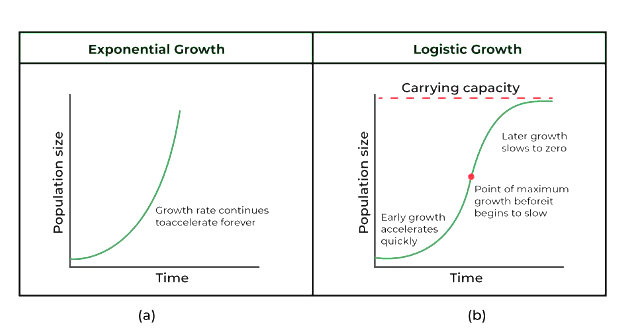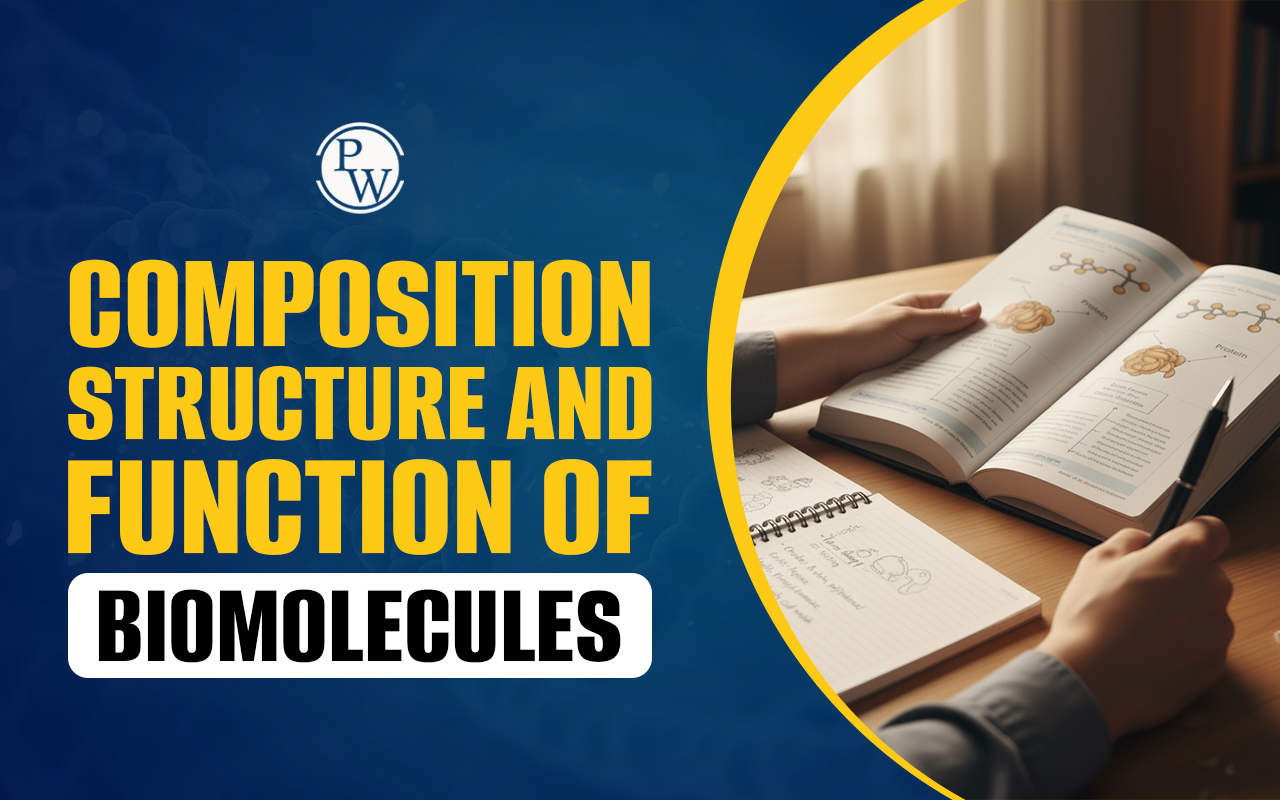
Population Ecology: Population ecology is a branch of ecology that studies populations, which are groups of individuals of the same species that live in the same area. It investigates how populations interact with their surroundings, the factors influencing population size, distribution, and dynamics, and the effects of population changes on ecosystems and species interactions. Population growth, or the rate at which a population increases or decreases over time, is an important aspect of population ecology. This blog will delve into the fascinating world of population ecology, delving into the key concepts, theories, and factors that influence population growth.
Population Ecology Key Concepts
Population Dynamics : The study of the factors that influence the size and structure of populations over time is known as population dynamics. It entails analyzing fluctuations and changes in population size by understanding birth rates, death rates, immigration, and emigration. Population Density : The number of individuals of a species within a given area or volume is referred to as population density. It provides important insights into population spatial distribution and interactions with the environment. Carrying Capacity: The carrying capacity of an ecosystem is the maximum number of individuals of a species that it can support over time. The availability of resources such as food, water, and shelter determines it. Age Structure: The distribution of people of different ages within a population is referred to as age structure. It is essential for understanding population growth and predicting future demographic changes. Age Pyramids: Age pyramids, also known as population pyramids, are graphical representations of the age and sex distribution within a population at a specific point in time. These pyramids are typically displayed as two back-to-back bar graphs, one for males and one for females, with age cohorts displayed on the horizontal axis and the population size or percentage on the vertical axis. Expansive (Triangular) Age Pyramid: An expansive age pyramid, like a pyramid, has a broad base and a thin apex. It usually denotes a population with a high birth rate, a significant proportion of youth, and a reduced life expectancy. Such pyramids are common in developing or less developed countries, and they are frequently accompanied by rapid population expansion. Constrictive (Inverted) Age Pyramid: When compared to an expansive pyramid, a constrictive age pyramid has a narrow base and a broad top. It suggests a population with a low birth rate, fewer young individuals, and a longer life expectancy. Constrictive pyramids are more common in more industrialized countries and indicate an aging population with poor population growth. Stationary (Rectangular) Age Pyramid: A stable age pyramid is characterized by roughly equal population proportions throughout all age groups, resulting in a rectangular shape. It indicates a population with an approximately balanced birth and death rate, resulting in constant population growth. This form of pyramid is frequently linked with countries or regions that have gone through a population change. Contractive (Negative Growth) Age Pyramid : A contractive age pyramid has a smaller base than the upper age groups, indicating that the population is shrinking. It indicates a population with a low birth rate, an elderly age structure, and a declining population. These pyramids correspond to countries or regions that are experiencing considerable population reduction and potential demographic issues. Overlapping (Irregular) Age Pyramid : Overlapping age pyramids have an irregular shape and may have odd or remarkable features. They can be caused by circumstances such as immigration, emigration, war, or other unforeseen events that disturb the normal age distribution. Overlapping pyramids may make it difficult to draw simple inferences about the characteristics of the population. Reproductive Strategies : Reproductive strategies differ between species and have an impact on population growth rates. Some species invest heavily in a small number of offspring with a higher chance of survival, whereas others produce a large number of offspring with a lower chance of survival. Natality : Natality, also known as birth rate, which is the measure of the number of live births in a population over a specific time, often expressed as the number of newly borned individuals per 1,000 individuals per year. It is a key demographic indicator that helps in understanding population growth and changes. Natality is influenced by various factors, including fertility rates, the age structure of the population, and social and economic conditions Mortality : Mortality, also known as death rate. The death rate is the measure of the number of deaths in a population over a specific period of time, typically expressed as the number of deaths per 1,000 individuals per year. Mortality is a critical demographic statistic that provides insights into the health and well-being of a population. Factors such as disease prevalence, access to healthcare, living conditions, and other social and environmental factors can affect mortality rates.Population Growth Models
Population growth models are mathematical representations that population ecologists use to understand and predict population size dynamics over time. These models aid in the study of population growth factors such as birth rates, death rates, immigration, and emigration. The exponential growth model and the logistic growth model are the two main types of population growth models.Exponential Growth Model
The exponential growth model is based on a hypothetical world with infinite resources, no environmental constraints, and constant per capita birth and death rates. In this model, population growth accelerates over time, resulting in a J-shaped curve. The exponential growth model's equation is: dN/dt = (b-d) x N If (b-d) = r Then, dN/dt = rN Where: Nt = Population size r = Intrinsic growth rate (per capita growth rate) t = Time In this equation, the intrinsic growth rate (r) represents the difference between the birth rate (b) and death rate (d) per individual: r = b - dLogistic Growth Model
The logistic growth model introduces a limiting factor, commonly the carrying capacity (K), which represents the maximum population size that an ecosystem can sustainably support. As the population approaches carrying capacity, the rate of growth slows until a stable equilibrium is reached. The logistic growth model equation is: dN/dt = rN ((K-N)/K) Where: N = Population size K = Carrying capacity r = Maximum per capita growth rate dN/dt = Population growth rate The logistic growth model takes into consideration both the exponential growth phase (when the population is far below carrying capacity) and the leveling-off phase (when the population approaches carrying capacity). The logistic growth model is more realistic than the exponential model because it takes into consideration environmental constraints, resource availability, and resource competition, all of which are important factors in real-world populations. It is a representation of the S-shaped curve seen in many natural populations. Figure: Representation of Exponential (a) and Logistic (b) Population Growth Curve Patterns.
Figure: Representation of Exponential (a) and Logistic (b) Population Growth Curve Patterns.
Factors Influencing Population Growth
A variety of factors influence population growth and dynamics. Among the important factors are: Birth Rate and Death Rate : The birth rate is the number of births per 1,000 people in a population per year, while the death rate is the number of deaths per 1,000 people in a population per year. The population growth rate is determined by the difference between these rates. Immigration and Emigration: Immigration is the movement of people into a population, whereas emigration is the movement of people out of a population. Changes in population size and composition are caused by both factors. Environmental Factors: The availability of resources such as food, water, and shelter has a significant impact on population growth. Climate, disease, and predation are all environmental factors that influence population dynamics. Density-Dependent and Density-Independent Factors: As population density increases, density-dependent factors such as resource competition and disease transmission become more influential. Natural disasters, for example, have an impact on populations regardless of their size.Conclusion
Population ecology is a complex field that sheds light on the interactions between species and their surroundings. Understanding population growth patterns and dynamics is critical for effective wildlife management, and conservation, and addressing global issues such as human population growth and its environmental impacts. We can work towards a sustainable future in which humans coexist harmoniously by applying population ecology principles.Population Ecology FAQs
Talk to a counsellorHave doubts? Our support team will be happy to assist you!

Check out these Related Articles
Free Learning Resources
PW Books
Notes (Class 10-12)
PW Study Materials
Notes (Class 6-9)
Ncert Solutions
Govt Exams
Class 6th to 12th Online Courses
Govt Job Exams Courses
UPSC Coaching
Defence Exam Coaching
Gate Exam Coaching
Other Exams
Know about Physics Wallah
Physics Wallah is an Indian edtech platform that provides accessible & comprehensive learning experiences to students from Class 6th to postgraduate level. We also provide extensive NCERT solutions, sample paper, NEET, JEE Mains, BITSAT previous year papers & more such resources to students. Physics Wallah also caters to over 3.5 million registered students and over 78 lakh+ Youtube subscribers with 4.8 rating on its app.
We Stand Out because
We provide students with intensive courses with India’s qualified & experienced faculties & mentors. PW strives to make the learning experience comprehensive and accessible for students of all sections of society. We believe in empowering every single student who couldn't dream of a good career in engineering and medical field earlier.
Our Key Focus Areas
Physics Wallah's main focus is to make the learning experience as economical as possible for all students. With our affordable courses like Lakshya, Udaan and Arjuna and many others, we have been able to provide a platform for lakhs of aspirants. From providing Chemistry, Maths, Physics formula to giving e-books of eminent authors like RD Sharma, RS Aggarwal and Lakhmir Singh, PW focuses on every single student's need for preparation.
What Makes Us Different
Physics Wallah strives to develop a comprehensive pedagogical structure for students, where they get a state-of-the-art learning experience with study material and resources. Apart from catering students preparing for JEE Mains and NEET, PW also provides study material for each state board like Uttar Pradesh, Bihar, and others
Copyright © 2025 Physicswallah Limited All rights reserved.
Get App









